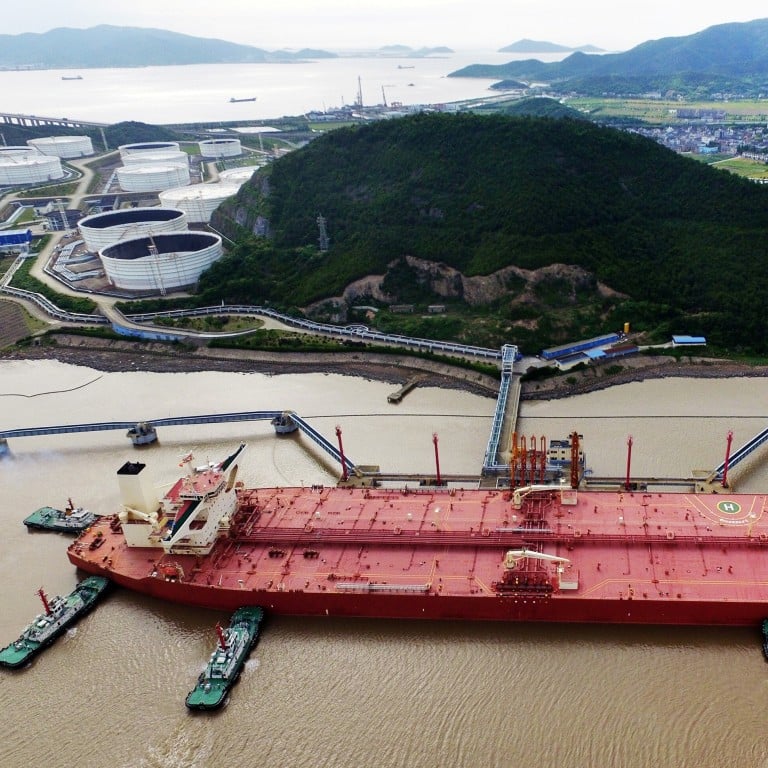
Explainer | How big are China’s crude oil reserves and how do they compare to the US’ SPR?
- The US asked China to release crude oil reserves to help stabilise soaring international prices as part of ongoing discussions on economic cooperation
- The issue was raised during the virtual meeting between Chinese President Xi Jinping and US President Joe Biden at the end of November
In a bid to help stabilise soaring international crude oil prices, the United States has asked China to tap into its crude oil reserves.
The US has the world’s largest reported strategic petroleum reserve, while China as the world’s largest importer of crude oil has also built up a system of its own.
Why does China need a strategic crude oil reserve?
In the 1990s, China said it planned to establish a US-like strategic petroleum reserve system, and the project officially started in 2007 when the National Strategic Oil Reserve Centre was tasked with overseeing the issue.
How have US-China talks failed and succeeded in recent years?
In the 14 years since then, China’s reliance on overseas oil has increased significantly, largely due to its role as the world’s factory, and because so many more people are driving.
In 2020, China imported 73 per cent of the oil it consumed, compared with 49 per cent in 2007.
As the world’s largest crude importer, China bought 542 million tonnes (4.06 billion barrels) last year, a year-on-year increase of 7.3 per cent.
Its January-October imports fell 7.2 per cent from a year earlier to 425 million tonnes (3.36 billion barrels), according to customs data.

02:25
Xi Jinping and Joe Biden call for mutual respect and peaceful China-US coexistence
Where are China’s crude oil storage facilities?
In 2007, China said it was planning to build a crude oil reserve system in the next 15 years, with a planned storage capacity of 70 million cubic metres (18.5 trillion gallons), which would offer a back up supply equivalent to 100 days of imports.
The first phase includes facilities with 16.4 million cubic metres’ worth of storage capacity in four coastal bases of Dalian in Liaoning province, Huangdao district in Qingdao in Shandong province, Zhenhai district in Ningbo in Zhejiang province and Zhoushan in Zhejiang province.
The first phase has been completed, while reports of a second phase have appeared in state media reports, although they have not been officially confirmed.
China’s consumers set to feel ‘stronger’ knock-on effect of rising factory-gate prices
How big is China’s strategic crude oil reserve?
China does not regularly publish the size of its crude reserves, but the National Bureau of Statistics said in 2017 that the national reserve, including some corporate stocks, totalled 37.73 million tonnes, or 280.7 million barrels, by mid-2017.
However, the country is widely believed to have stockpiled a significant amount of crude oil when prices plunged in March and April last year.
Wang Yongzhong, a senior energy researcher with the Chinese Academy of Social Sciences, estimates that China’s crude reserve is equivalent to around 40-50 days of its imports, still far below the 90-day criteria set by the International Energy Administration.

01:49
The underwater robots maintaining China’s first home-made semi-submersible oil platform
Despite this, Chinese authorities have more tools at their disposal to deal with supply or price issues compared to Western countries.
Stocks of the three state-owned oil giants – China National Petroleum Corporation, Sinopec Group and China National Offshore Oil Corporation – can be used by the government, while their production can be directly influenced.
How do China’s strategic crude oil reserves compare to the US?
The US created the Strategic Petroleum Reserve (SPR) in 1975.
The reserve currently holds around 600 million barrels in four heavily guarded locations on the Louisiana and Texas coasts, which is enough oil to meet demand for more than a month.
What’s next for China’s crude oil reserves?
This could be followed by higher domestic production targets, more diversified overseas supplies and new energy products.

01:30
China builds colossal horizontal onshore well in Gansu province
China is also eyeing a bigger role in international markets with its crude oil futures exchange in Shanghai offering the ability to leverage its status as the world’s largest crude oil buyer to obtain more pricing power.
In late September, the National Strategic Oil Reserve Centre conducted its first public sale of oil reserves to intervene in the domestic market, with 7.38 million barrels released from its Dalian base.
The Chinese authorities have taken an open attitude toward the recent US request for joint sales of crude reserves to influence international prices, and both sides are reported to be negotiating details of the proposal.

